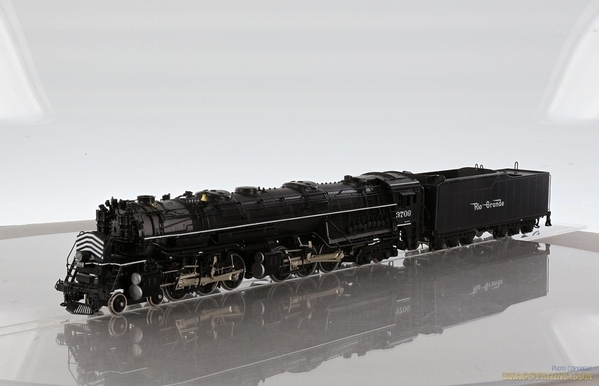Question about the L-105s... According to Key Imports... ALL L-105s received Overfire Jets post-war in 1947...
My Question is the following: Were some L-105s still sporting the green boiler when the overfire jets were added in 1947?
Reason being is, I see a Post War model offered by Key Imports back in the day with the green Boiler... And If that is accurate, I would love to have a Green boiler verizon from Sunset, with Overfire jets, and Flying Rio Grande.
If not, i think I may need to change my order to the black version with overfire jets and get it repainted...

Check out the Overfire Jets on that Green Boiler!


My research suggests that all L-105’s were gradually transitioned to black during the war as they went in for major maintenance. Did some escape? It’s possible but not likely. The chances that any were still green after over-fire jets were installed in ‘48 is even less likely but not impossible. There’s a very good article on Utah Rails that you may want to read. I’m sorry to say but your question (Mine too) will probably never be definitively answered as the necessary documentation just doesn’t seem to be out there. Nice model BTW.
http://utahrails.net/drgw/drgw-green-boilers.php
Hello! Thanks for the kind words! I'm very familiar with that article. Keith Williams states an interesting fact, " While there are post-WWII photos of D&RGW locos with green boiler jackets I question whether it was applied after the war."
Being as 1948 is only a few years afterwards, its entirely possible to have green boilered engines. A key note is a brand new 1800 class 4-8-4 that STILL HAD its green boiler jacket as late as 1949, and here is my source from the article above that we both are using for our research:
| D&RGW 1803 | 4-8-4 | June 1949 | Copeland, D&RGW Color Pictorial, Volume 1, page 41 (near Palmer Lake) |
Also
Dennis O'Berry wrote in April 2001:
I knew an individual that rode trains keeping a journal of engine numbers and paint schemes - never took any photos.
He recorded a 1400 in Salt Lake City (1922) with a green boiler and red Roof and a C-48 (1148 - I think) green and red at Leadville in 1927. Never saw that combination on the narrow gauge himself. Latest I've seen was a 1949 movie Perry Jenkins shot at Alamosa (I think) of a 3600 with a green boiler.
If a 3600 class 2-8-8-2 still had a green boiler in 1949, then it's definitely within the realm of possibility that some 3700's were still green.
Can anyone truly prove they were not? But I totally agree, and it's too bad we won't know for certain, that we'll never truly know the answer to this research question.
I would like to point out that David Devida over at Key has been very reliable in accuracy of their models... I would believe that they may have had access, at that time, to sources and data that would indicate that some late L-105s still had green boilers in late 40s... Maybe #3703 still had a green boiler when she blew up in the 50s. Hopefully one day some color pictures come up to help, and possibly some old Employee that worked on the Rio Grande can shed light on this matter.
Thanks for the compliment btw... and I AM VERY EXCITED that Scott is doing a 6th Version with Green boiler and overfire jets...
http://www.3rdrail.com/reservation.html#L105
hope he does #3703 in that scheme... David 




















